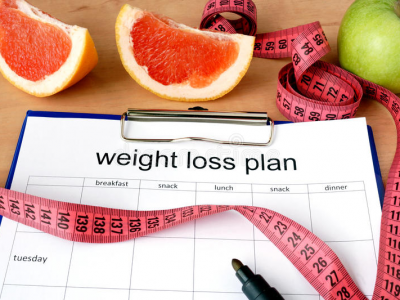Did you know Americans sit an average of 9.5 hours a day? Whether it’s in your office at home, you may be sitting a lot more than you think. Yikes!
Unfortunately, even if you exercise regularly, all this sitting hurts our health—and the research behind it is pretty shocking.
Here are 6 science-backed statistics about sitting that’ll motivate you get moving, plus some tips for being more active.
Photo Credit: Shutterstock
Eye-opening research published by JAMA Oncology found that a greater amount of sedentary time was associated with a higher risk of dying from cancer.
The same study found that replacing 30 minutes of sedentary time with moderate to vigorous-intensity physical activity could reduce this risk by 31 percent!
Photo Credit: Shutterstock
The normal office worker sits around 15 hours per day!
And there’s more: Sedentary jobs have increased 83% since 1950, according to the American Heart Association, and physically active jobs now make up less than 20% of the U.S. workforce, according to Johns Hopkins.
Photo Credit: Shutterstock
UCLA research suggests there is a link between prolonged sitting and reduced thickness of a brain region that helps form new memories.
This is significant because the thinning of that brain area can potentially lead to cognitive decline and dementia in middle-aged and older adults.
Photo Credit: DepositPhotos
Experts have revealed that people who sit more than eight hours a day with no physical activity have a risk of dying similar to that posed by obesity and smoking.
So, even if you’re in great shape and have never touched a cigarette, sitting most of the day is just as dangerous to your health.
Photo Credit: Shutterstock
Prolonged sitting significantly increases your risk of developing type 2 diabetes, according to a study published in the journal Diabetologia.
Along these lines, the American Diabetes Association points to a study that found performing three minutes of movement every half hour improved blood glucose levels in adults with type 2 diabetes.
Photo Credit: Shutterstock
Research published in JAMA Internal Medicine found that if adults between the ages of 40 and 85 did just 10 minutes of moderate to vigorous physical activity per day, we could prevent more than 110,000 deaths each year.
Examples of moderate to vigorous physical activity include walking at a brisk pace, jogging, riding a bike, playing tennis, or doing heavy cleaning around the house.
Photo Credit: Shutterstock
Only 28 percent of Americans are meeting the CDC-recommended amount of weekly exercise, which is 150 minutes of moderate-intensity exercise per week.
The reason this is a big deal? Regular weekly exercise comes with an array of benefits, including better sleep, improved brain health, reduced anxiety, stronger bones, and lower blood pressure.
Aside from exercise, here are some ways to incorporate more movement into your day:
Try a standing desk at work or in your home office.
Set an alarm to take a 5 to 10-minute walking break every 30 minutes.
Bring your morning coffee outside for a walk around the block.
Make time to play with the kids or your dog. (A fun and easy way to move more!)
Take a brief walk after eating dinner. (It’ll also help with digestion.)
Use the stairs instead of an elevator whenever possible.
Get up and move during commercial breaks if you’re watching TV.
Throw on your favorite song and dance.
Take your dog for a walk.
Pace around while you’re on a phone call.
Drink more water. Not only is it good for your health, but you’ll have to get up for bathroom breaks more often.
Use a fitness tracker to monitor how many steps you’re taking each day, and aim for 10,000. (Fewer than 5,000 steps per day is a sign you’re too sedentary.)
Remember, 5 minutes here and 10 minutes there really adds up! Even small breaks can make a significant difference and decrease your risk for serious health issues.
Photo Credit: Shutterstock
Starting a strength training routine can be intimidating and confusing. Walk onto any weight floor in the gym, and it seems everyone there has a plan and knows what they’re doing but you!
Of course, the truth is that everyone had to start as a beginner at one time. That’s why we created this beginner strength training guide for women.
The Beginner Strength Training Guide for Women
One of the best things you can do to stay healthy and active with age is to make mobility exercises a regular part of your routine. Did you know that limited mobility is actually the thing that makes you look the oldest
A quick mobility routine is often all it takes to start feeling better!
To see the benefits firsthand, try the 15 best mobility exercises to keep you in action and impact your overall health for years to come.
15 Best Mobility Exercises for Seniors to Stay Active
Photo Credit: Shutterstock
Guess what—walking works! Study after study proves that people who walk regularly stay more youthful, stronger, and happier in old age. To get started, try my free 14-day challenge and get walking for a weight loss plan.
Whether you like to walk on a machine, around your workplace, or in your neighborhood, walking can and should easily be incorporated into your daily life!










Comments